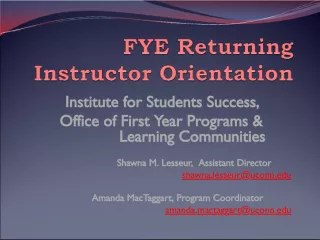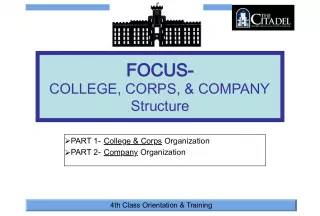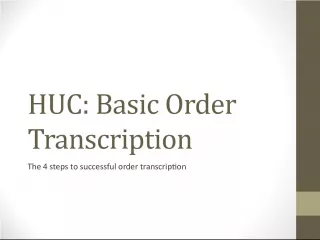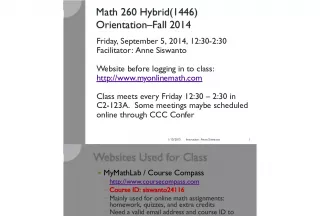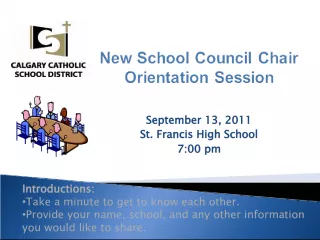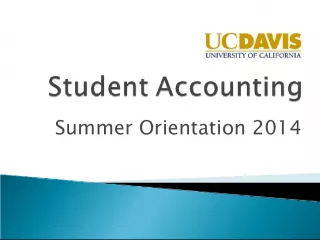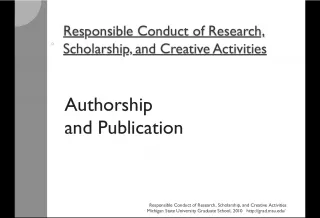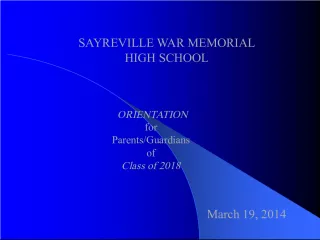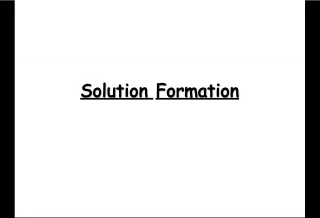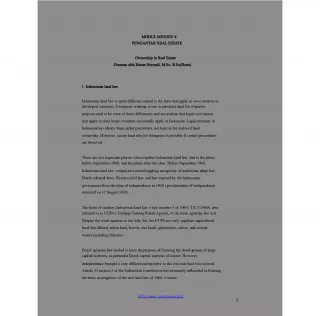Rifle Orientation: First Steps to Responsible Ownership


This orientation aims to introduce the knowledge, skills, and attitude necessary for safe rifle ownership and usage. The program includes registration, firearms instruction, responsibility, safety training, and basic handbooks. Firearms will be unloaded and placed on the table in front of you, with no ammunition in the classroom.
- Uploaded on | 0 Views
-
 mackinley
mackinley
About Rifle Orientation: First Steps to Responsible Ownership
PowerPoint presentation about 'Rifle Orientation: First Steps to Responsible Ownership'. This presentation describes the topic on This orientation aims to introduce the knowledge, skills, and attitude necessary for safe rifle ownership and usage. The program includes registration, firearms instruction, responsibility, safety training, and basic handbooks. Firearms will be unloaded and placed on the table in front of you, with no ammunition in the classroom.. The key topics included in this slideshow are Rifle, Orientation, Registration, Firearms Instruction, Responsibility, Safety Training,. Download this presentation absolutely free.
Presentation Transcript
1. NO AMMUNITION in the classroom NONE ! Firearms UNLOADED Action OPEN On the table in front of you
2. FIRST Steps Orientation (Rifle) Welcome & Registration F irearms I nstruction , R esponsibility & S afety T raining
3. Orientation Goal: To introduce the knowledge , skills and attitude necessary to safely own and use your rifle. l Schedule l Facilities l Fit l Basic handbooks
4. Lesson 1 l Safety Rules l Rifle Parts l Rifle Operation
5. NRA Gun Safety Rules 1. Always keep the gun pointed in a safe direction 2. Always keep your finger off the trigger until you are ready to shoot. 3. Always keep the gun unloaded until youre ready to use it.
6. Lesson 1 Rifle Parts Major Components l Stock l Barrel l Action
7. Lesson 1 Rifle Parts Stock Butt Comb Grip (wrist) Fore-end (or Fore-arm)
8. Lesson 1 Rifle Parts Barrel Muzzle Breech Chamber Bore Rifling Sights
9. Lesson 1 Rifle Parts Action Receiver Bolt/breech block Trigger Trigger guard Magazine Safety
10. Lesson 1 Rifle Operation l Loading l Unloading
11. Review Lesson 1 Safety, Parts & Operation l Safety Rules l Rifle Parts l Rifle Operation
12. Lesson 2 l Ammunition Considerations l Shooting Fundamentals
13. Ammunition Make sure you have the correct ammunition! l Box l Cartridge case l Barrel or chamber
14. Ammunition Potential ammunition malfunctions l Misfire l Hangfire
15. Ammunition Potential ammunition malfunctions Squib load
16. Shooting Fundamentals Physical Characteristics l Dominant eye? l Shooting hand?
17. Shooting Fundamentals The Five Fundamentals of Rifle Shooting 1. Position 2. Breath Control 3. Aiming 4. Trigger Squeeze 5. Follow Through
18. Shooting Fundamentals 1. Position -- body Comfortable, balanced relaxed; bone-bone support; aligned with target Both elbows on bench Shooting hand grasping the grip Non-shooting hand? Head erect
19. Shooting Fundamentals 1. Position -- rifle Rifle positioned firmly against the shoulder Grip of the stock grasped with lower three fingers, thumb on top Fore-end lies on relaxed non-shooting hand
20. Shooting Fundamentals 2. Breath Control Body movement affects the shot So quiet yourself Breathing requires muscle movement So shoot between breaths Breathe out part way, hold, and shoot. Dont hold your breath too long or muscle tremors will create movement and disrupt the shot.
21. Shooting Fundamentals 3. Aiming -- Sight Alignment
22. Shooting Fundamentals 3. Aiming -- Sight Alignment o Eye relief o Cheek placement o Target, front sight and rear sight aligned
23. Shooting Fundamentals 3. Aiming -- Sight Alignment Focus is on the front sight
24. Shooting Fundamentals 4. Trigger Squeeze Dont use the P word!!! Pad of index finger on triggerclear of the stock Gradually increasing pressure STRAIGHT BACK until the mechanism releases SURPRISE yourself when the gun shoots
25. Shooting Fundamentals The Five Fundamentals of Rifle Shooting 1. Position 2. Breath Control 3. Aiming 4. Trigger Squeeze 5. Follow Through
26. Review Lesson 2 - Ammunition & Fundamentals l Proper Ammo l Malfunctions l Hand/eye choice l Fundamentals
27. Lesson 3 Practical Exercise on the Range Safety rules Range commands Learning a position Common problems Shoot the exercise Review & critique
28. NRA Gun Safety Rules 1. Always keep the gun pointed in a safe direction 2. Always keep your finger off the trigger until you are ready to shoot. 3. Always keep the gun unloaded until youre ready to use it.
29. Other Safety Rules l Be sure the gun is safe to operate l Know how to use the gun safely l Use only the correct ammunition l Know your target and what is beyond it l Wear hearing and eye protection l Never use alcohol or drugs before or while shooting l Store guns so they are not accessible to unauthorized persons l ***Other rules may apply!
30. Introduction to Shooting Range Commands & Procedures Load or Load xx rounds Commence Firing Cease Firing Problem? Malfunction? Dropped ammo?
31. Introduction to Shooting Learning a Shooting Position l Study the position l Practice without a rifle l Practice with an unloaded rifle l Align to the target l Test the position by live firing
32. Introduction to Shooting At the Firing Point TAKE YOUR TIME . KEEP YOUR COOL . l Focus on safety and the shooting fundamentals. l Strive for consistent shot groups.
33. Introduction to Shooting Common Problems l Flinching anticipating the shot l Jerking uneven trigger pull l Fatigue man, this is work!
34. Review Lesson 3 - Practical Exercise on the Range l Bench rest Position l One Round Exercise l Three Round Exercise & adjust sights l Off-hand (standing) Position
35. Lesson 4 l Rifle care and cleaning l Rifle storage l Next steps
36. Rifle Care & Cleaning Purpose of Cleaning l Remove powder residue l Remove rust & crud l Protect the pistol from rust, corrosion and wear l Make sure rifle is correctly assembled and functions properly
37. Rifle Cleaning Safety Guidelines l Ammunition must not be present in the area l The gun must be unloaded l The action must be open
38. Rifle Cleaning Materials Needed l Soft cloth l Cleaning rod/cable l Cleaning attachments l Cloth patches l Small brush l Bore cleaner l Gun oil l Rifle Stand
39. Rifle Cleaning Procedures 1. Field strip (break down for cleaning) 2. Wet down bore with a wet patch 3. Brush gun and wipe off powder residue 4. Brush bore with a wet brush 5. Clean bore with dry patches until they come out clean 6. Wipe gun clean and lightly lubricate 7. Lightly oil bore (one patch, light oil) 8. Reassemble and check function
40. Health and Hygiene Considerations l Avoid eating, drinking or smoking while shooting or cleaning firearms l After shooting and cleaning firearms wash hands and face before eating or drinking. l Change clothes and shower after a shooting session
41. Rifle Storage NRA Rule: Store guns so they are not accessible to unauthorized persons l Trigger Lock l Lockable rifle case l Lockable gun rack l Safe l Separate guns and ammunition
42. Next Steps How to keep what youve learned: Practice, practice, practice. Use big close targets, dont lose bullets First practice skills youre weak in. Accuracy first, then speed!
43. Next Steps Additional Training l NRA Basic Rifle Shooting Course l Competitive shooting High Power Small bore Tactical rifle, IPSC, IDPA Hunting
44. Review Lesson 4 Care & Cleaning, Storage, Next Steps Why, when and how to clean your rifle Safe gun storage Next steps PRACTICE



